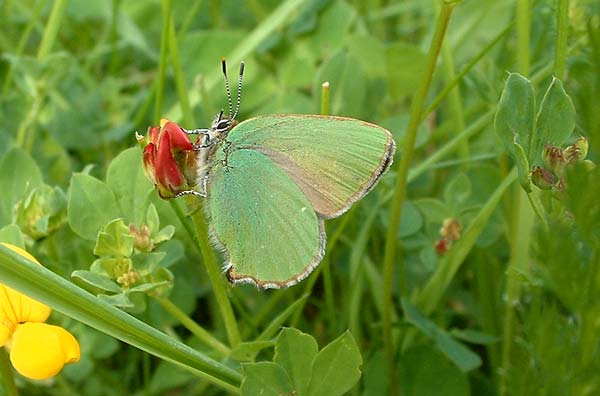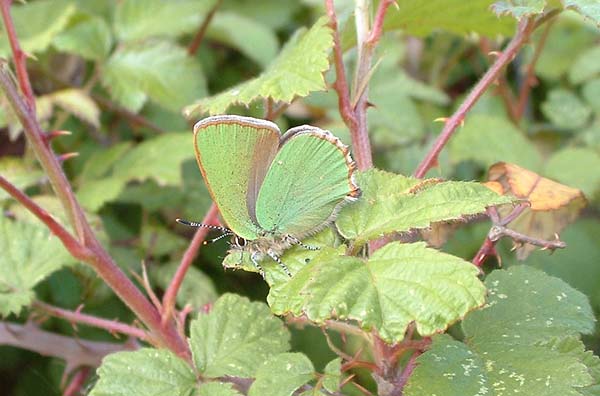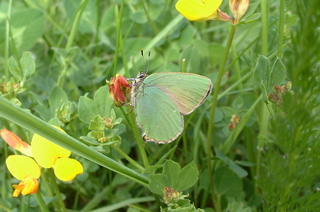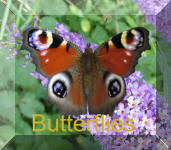The adult butterflies are very pretty but can be difficult to see. Their chocolate-brown upper-side makes them difficult to spot as they fly low over the ground and when they settle they close their wings over their backs to reveal leaf-green undersides, which blend very well with the surrounding vegetation. Therefore only the under wings are brightly coloured .The Green Hairstreak is a rather local species, although a good deal more frequent in the south of the county. Adults are on the wing from mid to late April and are usually over before the end of June. TThe caterpillars feed on a wide variety of plants including Bramble, Gorse and Broom. Bilberry is probably the favourite foodplant on acid soils, but other plants such as Common Rockrose and Bird's-foot Trefoil are used in lime-rich situations.
Identification
Wingspan 30-35 mm.
Both sexes exhibit similar colour-patterning. The upper surfaces of the wings, which are never seen when the butterfly settles, but glimpsed when it is in flight, are a plain dull brown. The under-side is a very bright copper green. There is a row of white spots running across the hind wing and the edges of all wings are margined white interrupted with dark brown bars. These dark bars increase in intensity along the margin of the hind wings and end in a small black-tufted tail with a white base.The sexes are almost indistinguishable except for the tiny bluish scent mark on the males forewings



Behaviour and life history
The males are very territorial and adopt perches, often overlooking small clearings, from which they swoop down in an erratic fashion to defend their territories, before returning to their perches. Due to their colouring they can be very difficult to find on their perches. Green Hairstreaks over-winter as chrysalises underground in ants nests. Adults emerge in late April and early May, laying their eggs in May and June. Caterpillar development is completed by the end of July. It pupates on the ground and the chrysalis is harvested by ants which drag it into their nests to feed of its secretions. In this part of the country, the main food plants are Gorse (Ulex spp), Bilberry (Vaccinium myrtillus) and Birds-foot Trefoil (Lotus corniculatus).
Where to look for it
It prefers relatively dry, rough ground with plenty of scrub, especially gorse.
Distribution and status
Very rare, it possibly no longer breeds in the City and any specimens seen are likely to be casual visitors.
When to look for it
Adults are on the wing between late April and early July with numbers peaking at the end of May.
Similar species
The green undersides of the wings make this species unmistakeable.

